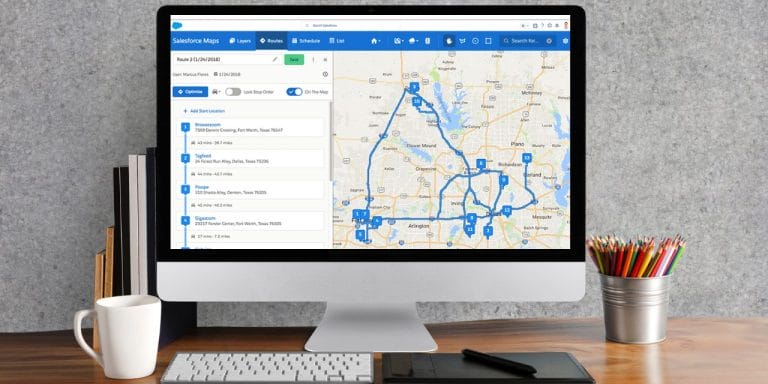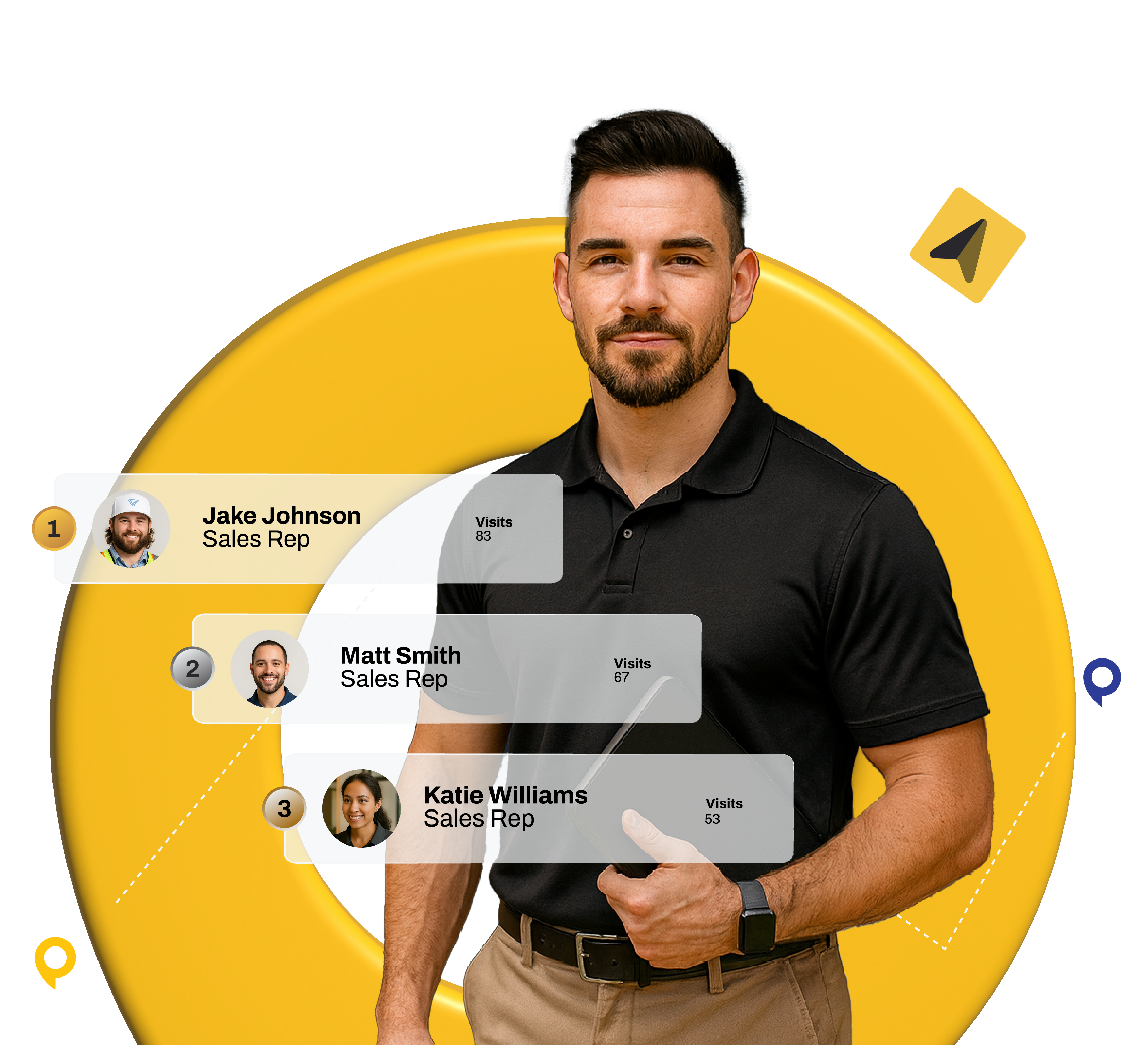You’ve tried it. Your reps have tried it. You open ChatGPT or your AI tool of choice and type what feels like a reasonable request: “Write a cold email to a manufacturing prospect.”
What you get back is… fine. It’s a technically correct email. It’s also generic, lifeless, and sounds nothing like you or your top performers. It lacks the nuance, industry-specific insight, and persuasive edge that actually opens doors in the field. So you close the tab, and your team goes back to doing things the old way, leaving a powerful engine idling in the garage.
This is the most common frustration with AI in sales today. We’re told it’s a revolution, but our initial experiences feel more like a waste of time.
Here’s the truth from one sales leader to another: The problem isn’t the AI. It’s the prompt.
AI is a brilliant intern, but it’s not a mind reader. Vague instructions lead to vague results. To unlock its true potential, you need to stop making simple requests and start giving strategic directions. This article is your guide to doing just that. We’ll give you the exact mental model to turn any AI into a world-class sales assistant and then hand you the keys to a complete library of over 30 copy-and-paste AI sales prompts built on the powerful RIGS framework.
Want to skip the theory and get straight to the prompts? Click here to jump directly to the library.
Go Beyond Simple Questions with the RIGS Framework
Before you copy a single prompt, you need a mindset shift. The difference between an AI amateur and an AI-powered sales pro lies in the quality of the information you provide upfront. Every high-value sales prompt in our library is built on the four pillars of the RIGS prompting framework: Role, Instruction, Guardrails, and Specifics.
R is for Role
Never start with your request. Start by telling the AI who it is. This instantly frames the conversation and taps into the vast datasets associated with that expert persona, ensuring a higher quality of output.
- Instead of: “Write a response to an objection.”
- Use: “You are a field sales expert who has handled thousands of objections across the medical device industry…”
I is for Instruction
This is your core command. Be clear, direct, and action-oriented. Tell the AI exactly what you want it to create, develop, analyze, or write.
- Example: “Create a multi-touch cold outreach sequence that addresses specific pain points for this industry and includes pattern interrupts to grab attention.”
G is for Guardrails
Think of guardrails as the rules of the road for your AI. They are the constraints you impose to keep the output focused, on-brand, and immediately usable. This is where you define the tone, length, style, and, most importantly, the exact format you need.
- Example: “Format as: Touch 1 (LinkedIn), Touch 2 (Email), Touch 3 (Phone script). Tone: Professional but conversational. Length: Each touch 100-150 words maximum.”
S is for Specifics
This is the most critical pillar for creating personalized, high-value output. You live and breathe your industry, your product, and your prospects’ pain points. The AI knows none of this unless you tell it. Be ruthlessly specific with your context.
- Generic Specifics: “I sell CRM software to businesses.”
- Powerful Specifics: “I’m targeting manufacturing companies with 50-200 employees in the Midwest. Their primary struggle is disconnected sales and production data, leading to inaccurate forecasting. We compete with Salesforce, but our key differentiator is a faster, 30-day implementation timeline.“
When you master the RIGS Framework, you stop getting generic advice and start getting strategic assets you can deploy in minutes.
Your Complete Toolkit: Navigating the AI Prompt Library
Now that you have the framework, we’ve built the tools. The AI sales prompt library linked below isn’t a random collection of ideas; it’s a systematized toolkit built on the RIGS framework, designed for the reality of your sales funnel and the structure of your team.
We’ve organized 28 detailed prompts in two essential ways so you can find exactly what you need, right when you need it.
1. Organized by Sales Funnel Stage
Find the perfect prompt for the task you’re doing right now. Each category is packed with prompts to overcome specific challenges at each stage of the deal.
- Prospecting & Lead Generation: Go beyond generic cold outreach with prompts for social selling content, lead qualification scoring (MEDICC), and deep territory research.
- Pitching & Presentation: Craft personalized pitches, prepare for any objection, define your value proposition, and customize your demos.
- Closing & Negotiation: Master contract term optimization, justify your price with value-based frameworks, and create ethical urgency.
- Relationship Management: Build playbooks for account expansion, customer success planning, renewal preparation, and systematic referral generation.
2. Organized by Role & Responsibility
Different roles have different needs. This structure ensures every member of your organization can leverage AI for their unique goals.
- For Sales Reps: Prompts to master daily activity planning, optimize CRM data, and track personal performance.
- For Sales Leaders: Frameworks for high-impact team coaching, balanced territory allocation, and accurate pipeline forecasting.
- For Sales Operations: Blueprints for process optimization, data analysis, and measuring the efficiency of your field team.
Don’t Know Where to Start? The 5-Minute Fast Track
Feeling overwhelmed is normal. To help you gain immediate momentum, start with these five high-impact prompts. Customizing and deploying one of these will deliver tangible results this week.
- Cold Outreach Optimization (Prompt #1): The fastest way to see a measurable impact. A well-structured outreach prompt can immediately increase response rates and book more meetings.
- Objection Handling Preparation (Prompt #6): Stop improvising. Use this prompt to prepare for the top 3-5 objections you face regularly and walk into your next meeting with unshakable confidence.
- Sales Rep Daily Activity Planning (Prompt #17): Give your reps the gift of time. This prompt helps optimize travel routes and time blocks to maximize precious face-to-face selling time.
- Follow-up Sequence Planning (Prompt #12): Prevent deals from stalling post-proposal. This creates a value-driven, multi-touch plan to maintain momentum without being pushy.
- Team Coaching Frameworks (Prompt #21): For leaders, this prompt provides structured templates for coaching conversations, turning your next 1-on-1 from a simple check-in into a targeted performance-booster.
Advanced Scenarios: From Research to Results in a Single Conversation
Following the 28 individual prompts, you’ll find our advanced multi-step scenarios. These powerful sequences guide the AI through a complete workflow, like conducting deep prospect research or building a competitive displacement campaign.
A Quick Word on How These Work:
Think of your AI tool (like ChatGPT) as a brilliant assistant with a short-term memory. It remembers everything you discuss within a single, continuous chat conversation. However, if you start a new chat, its memory is wiped clean.
Because each prompt in these scenarios builds on the information from the one before it, they must be used in the same chat window.
- Do: Paste Prompt 1, get the result, then paste Prompt 2 in the same chat, and so on.
- Don’t: Start a new chat for each prompt in the sequence.
Scenario 1: Prospect Research
This five-step prompt series creates a detailed, actionable profile for any new prospect, moving from high-level data to a precise engagement strategy.
Important Reminder: To get the correct results, you must run all five of these prompts in order, within the same continuous chat conversation.
- Step 1: Company Profile & ICP Fit. The first step is to generate a concise summary of the target company, including its industry, size, revenue, and key business offerings. This prompt verifies if the prospect aligns with your Ideal Customer Profile (ICP).
- Step 2: Pain Point & Opportunity Analysis. Based on the company’s profile and recent news, the second step is to identify 3-5 potential business challenges or pain points they are likely facing. This prompt uncovers the specific opportunities where your solution can provide value.
- Step 3: Key Stakeholder Mapping. The third step is to identify the key decision-makers and influencers relevant to your solution. This includes mapping out potential roles like the Economic Buyer, potential Champions, and primary End-Users within the organization.
- Step 4: Personalized Outreach Angle. Using all the gathered intelligence, the fourth step is to create a unique “hook” or engagement angle for your initial outreach. This prompt could leverage a recent company announcement, a stakeholder’s recent social media activity, or a relevant industry trend to ensure a personalized approach.
- Step 5: Competitive Positioning & Differentiation. The final step is to analyze the prospect’s likely current vendor or solution and generate three key differentiation talking points. This prompt prepares you to articulate why your solution is the superior choice tailored to their specific, identified needs.
Scenario 2: Competitive Displacement Campaign
This four-step chain is designed to create a full campaign for strategically winning business from a competitor in a specific territory.
- Step 1: Territory Intelligence The first step is to analyze a competitor’s market positioning within a specific geographic territory to identify their vulnerabilities and determine the best timing for displacement conversations.
- Step 2: Differentiation Framework Based on the identified vulnerabilities, the second step is to create five distinct talking points that position your solution as superior, using proof points and client success metrics.
- Step 3: Displacement Scripts The third step involves developing conversation scripts for three specific displacement scenarios: contract renewals, performance reviews, and competitive evaluations. These scripts should include transition phrases and responses to common objections.
- Step 4: Implementation Timeline The final step is to create a 90-day timeline for the displacement campaign, complete with milestone checkpoints and criteria for measuring success.
Scenario 3: Multi-Stakeholder Enterprise Sale
This sequence helps a sales team manage a complex sale within a large organization by mapping and addressing the needs of various decision-makers.
- Step 1: Stakeholder Mapping The process begins by mapping the decision-making structure at the target company. This includes identifying the economic buyer, technical evaluators, end users, and other influencers, as well as their communication preferences and success metrics.
- Step 2: Customized Value Propositions Using the stakeholder analysis, the next step is to create unique value propositions for each decision-maker, aligning the proposed business outcomes with their specific KPIs and departmental goals.
- Step 3: Orchestrated Engagement Plan This step involves designing a coordinated engagement strategy to address each stakeholder’s concerns, build consensus, and develop internal champions for your solution.
- Step 4: Proposal Customization The final prompt creates a modular proposal structure that can be tailored to the mapped stakeholder priorities, with sections for an executive summary, technical specifications, and ROI projections.
Scenario 4: Territory Expansion Campaign
This four-part scenario provides a structured framework for launching a sales campaign in a new market.
- Step 1: Market Research The campaign starts with research into the new territory to understand its industry concentration, competitive landscape, key decision-makers, and the most effective prospecting channels.
- Step 2: Go-to-Market Strategy Based on the research, the second step is to develop a launch strategy that includes prospect prioritization, customized messaging, and success metrics for the first 90 days.
- Step 3: Activity Planning This prompt creates detailed activity plans to penetrate the territory, including daily prospecting targets, weekly meeting goals, and quarterly revenue objectives.
- Step 4: Performance Optimization The final step is to design feedback loops and protocols for continuously improving the territory expansion based on conversion rates and market responses.
How to Use the Sales AI Prompt Library
This library is designed for immediate action. Follow this simple workflow to turn any prompt into a strategic asset in minutes:
- Find & Copy: Browse the library below and find the prompt that fits your immediate need—whether it’s for cold outreach or objection handling—and copy it to your clipboard.
- Customize with Your Specifics: This is the most important step. Paste the prompt into your AI tool of choice (ChatGPT, Gemini, Claude, etc.) and carefully replace the bracketed placeholders like
[COMPANY SIZE]and[CORE CHALLENGES]with your own rich context.- Pro Tip: If you forget this step, don’t worry! The AI is instructed to ask for the missing information before it begins working.
- Generate Your Asset: Run the prompt and watch the AI deliver a strategic asset—like a tailored email sequence or a call script—that’s built for your specific world.
Reminder: If you’re using one of our advanced multi-step prompts, be sure to run each of the steps in order, within the same continuous chat conversation.
From a Great Prompt to a Closed Deal
Once you have your AI-generated content, the next step is execution. A perfect plan only matters if your team can act on it consistently in the field.
SPOTIO’s field sales engagement platform helps your team put AI-driven strategies into action, track every activity, and measure the real-world impact on your pipeline.
See how SPOTIO connects strategy to revenue. Request a personalized demo of SPOTIO today.




